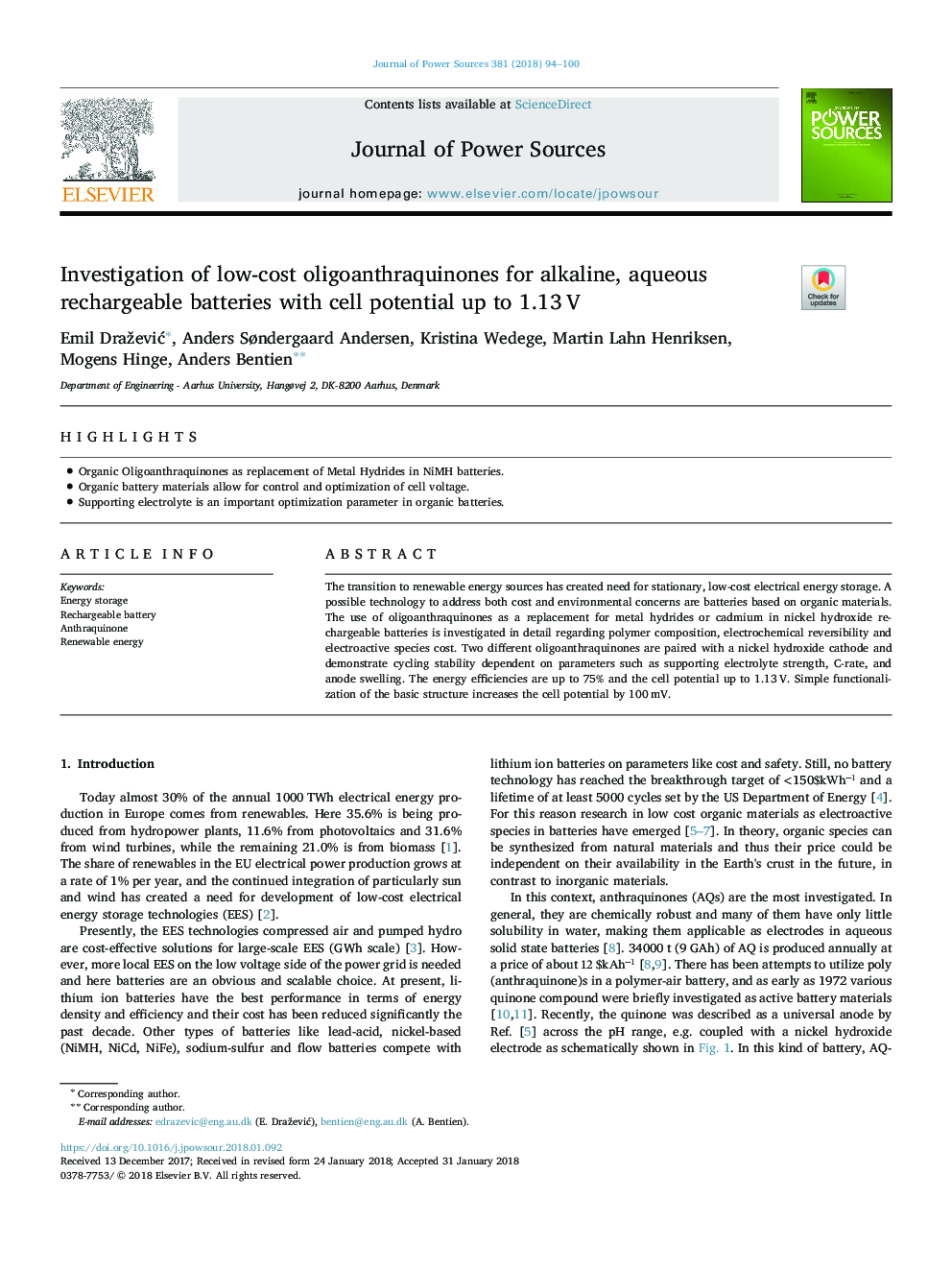| Article ID | Journal | Published Year | Pages | File Type |
|---|---|---|---|---|
| 7725508 | Journal of Power Sources | 2018 | 7 Pages |
Abstract
The transition to renewable energy sources has created need for stationary, low-cost electrical energy storage. A possible technology to address both cost and environmental concerns are batteries based on organic materials. The use of oligoanthraquinones as a replacement for metal hydrides or cadmium in nickel hydroxide rechargeable batteries is investigated in detail regarding polymer composition, electrochemical reversibility and electroactive species cost. Two different oligoanthraquinones are paired with a nickel hydroxide cathode and demonstrate cycling stability dependent on parameters such as supporting electrolyte strength, C-rate, and anode swelling. The energy efficiencies are up to 75% and the cell potential up to 1.13â¯V. Simple functionalization of the basic structure increases the cell potential by 100â¯mV.
Related Topics
Physical Sciences and Engineering
Chemistry
Electrochemistry
Authors
Emil DraževiÄ, Anders Søndergaard Andersen, Kristina Wedege, Martin Lahn Henriksen, Mogens Hinge, Anders Bentien,
